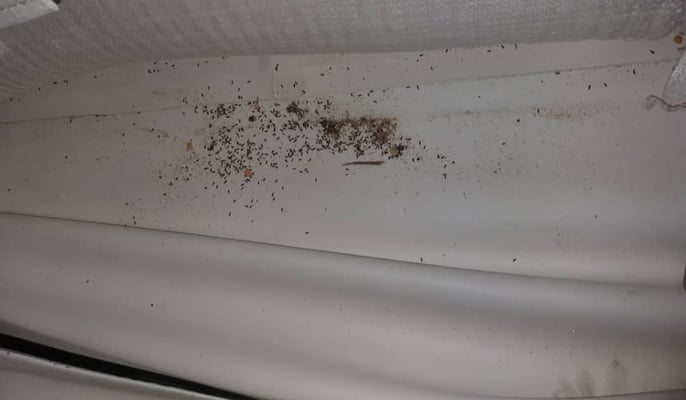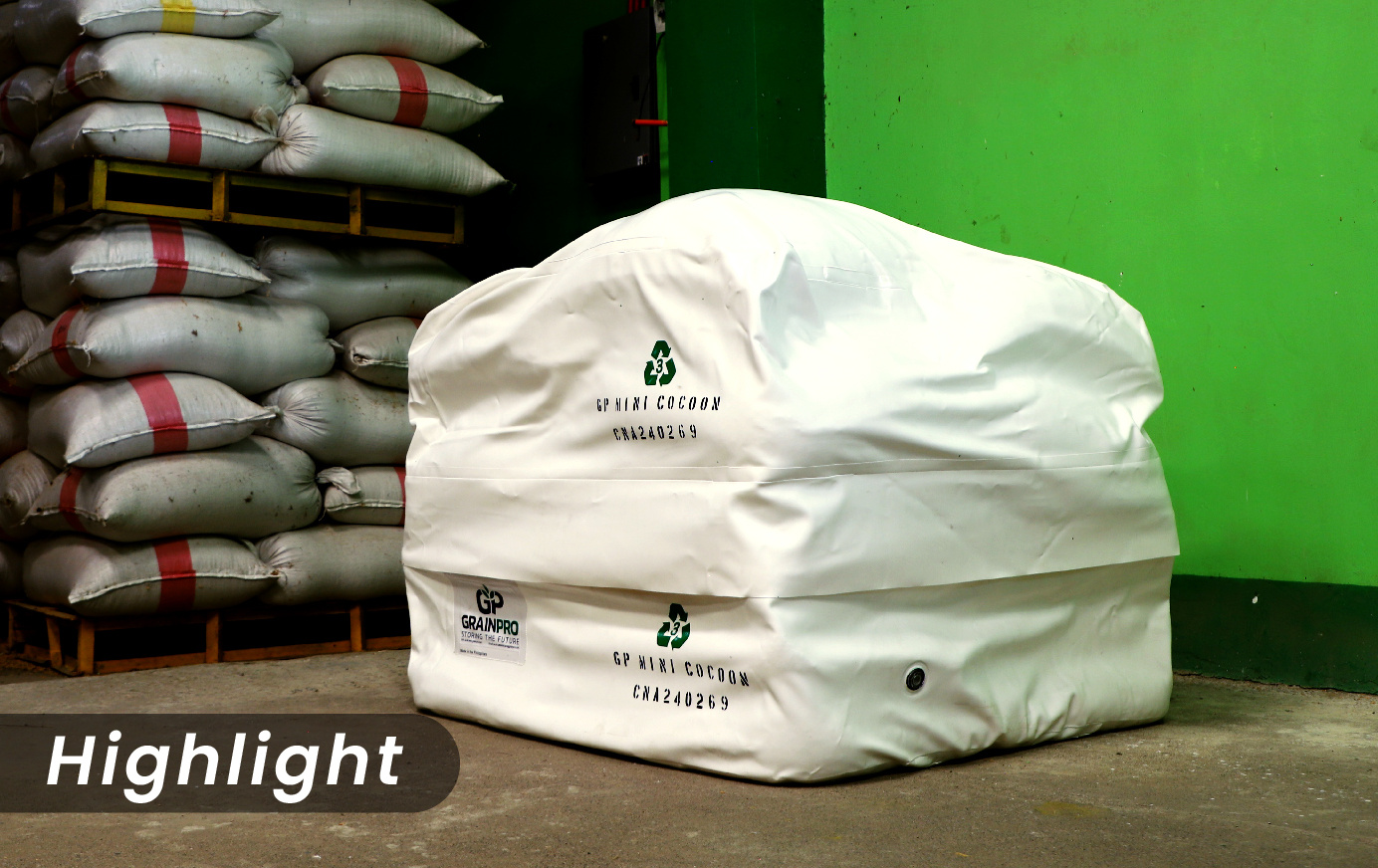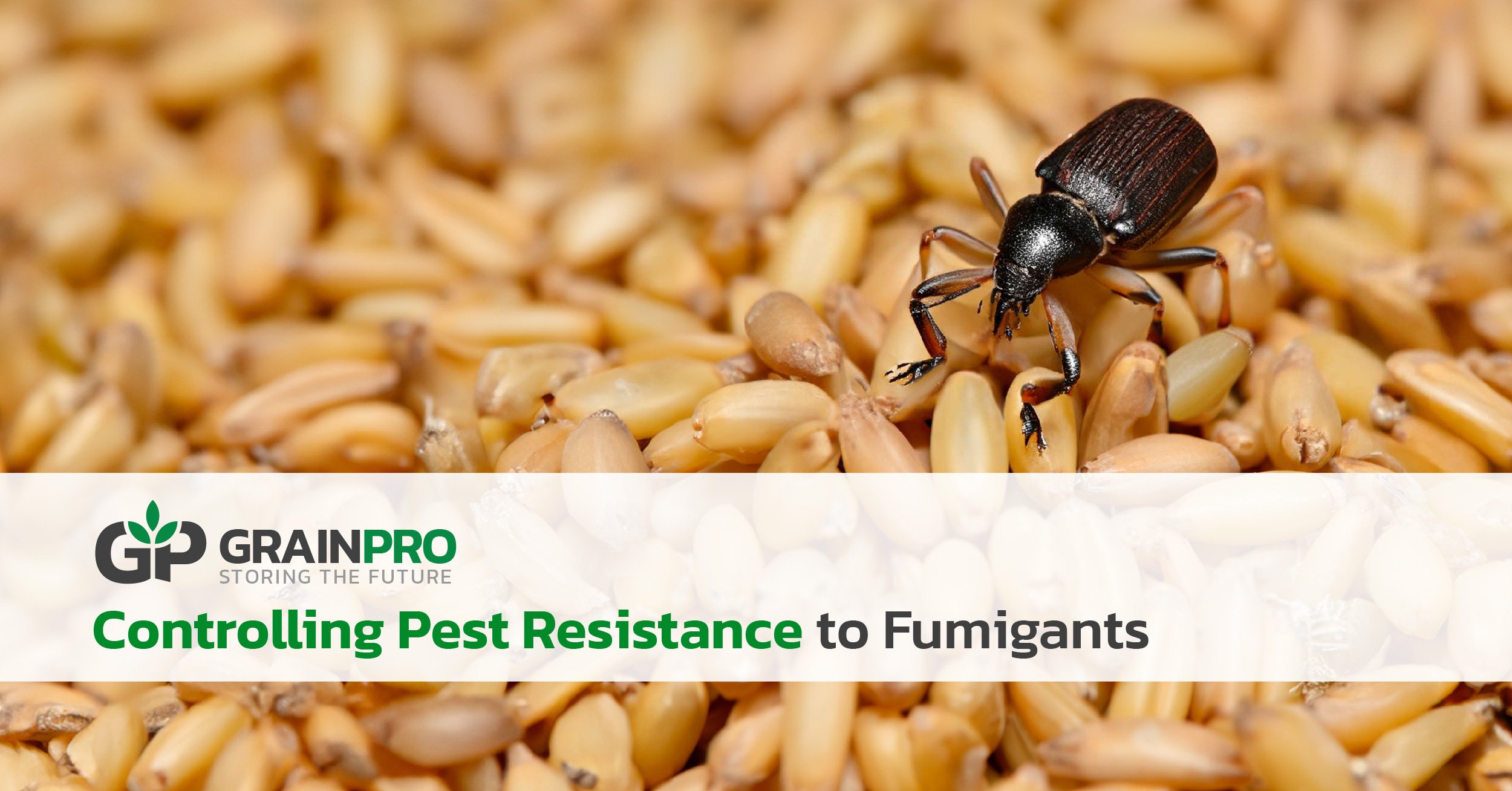Achieving food security entails addressing the factors that lead to food loss. However, the world still loses 13% of food during post-harvest. While many factors contribute to this damage, Pests are one of the most devastating factors throughout food production.
Pest damage costs more than 220 billion USD from the losses of up to 40% of global crops. Thus, controlling pests is crucial in avoiding damage and preventing losses. The most common measure to control pests is the use of pesticides and fumigants.
Despite the efficiency in eliminating pests, these measures can pose serious health risks. The environment may also be affected as these chemicals can contaminate surroundings and produce greenhouse gas emissions. The continuous use of pesticides and fumigants may also dwindle its effectiveness, possibly leading to a growing issue — Pest Resistance.
Understanding Pest Resistance
According to the Pesticide and Environmental Stewardship (PES), pest resistance is a change in the sensitivity of a pest to a type of pesticide or fumigant. Resistance develops with the constant use of similar chemicals, which causes changes within the population. Once resistance develops, the control rate will gradually lessen until it no longer affects the pest population.
Further understanding resistance leads us to Biology. More specifically, genetics plays a role in its development. While chemical-based pest control wipes out the susceptible population, those with resistant characteristics survive and pass on their improved traits to the next generation. Consistent use will continue to promote resistant pests, and eventually, it will no longer be effective.
An alarming example is the growing resistance of grain insects to Phosphine, a fumigant commonly used to control infestations. According to a related study, the Food and Agriculture Organization (FAO) developed a test to determine the presence of resistance in storage pests since 1975, wherein six out of the eight surveyed species had shown resistance. Phosphine failures have continually risen throughout the decades, suggesting higher resistance levels had started in certain species, like the lesser grain borers, which consistently exhibited high incidences of resistance.
Like other resistances, Phosphine resistance is genetics-driven and passed by the population that survived a dose that would kill susceptible pests. One of the main reasons is the lack of suitable alternatives, which pushed its continuous use.
With the points tackled, insect resistance poses serious challenges across various industries, including health and agriculture. Thus, this raises some questions: Can pest resistance be reversed, and how can this growing issue be addressed?
Actions To Pest Resistance
Given its severe risks, the reversal of pest resistance has been a topic of various research and studies leading to the genetic strategy. The University of California biologists have developed a reversal method involving genetic editing to replace resistant traits with the former susceptibility. While this breakthrough can significantly contribute to pest control in the future, implementing better pest management can also help slow down and prevent resistance development.
The best way to manage pesticides focuses on three strategies: avoid, delay, and reverse. Following Integrated Pest Management (IPM) avoids resistance by reducing the reliance on chemical-based measures to delay its development. After which, some reversal can occur by allowing sufficient time between the applications, allowing susceptible populations to dilute the resistant population.
However, reversal only remains a possibility. No one can predict when the resistance will return to its previous sensitivity.
Minimizing the use of chemical-based control is at the heart of resistance management. Hence, IPM programs incorporate monitoring to determine the best application timing, effectively reducing pesticide usage by approximately 25-50%. Mixing and using similar persistent chemicals should also be avoided to lessen the chances of promoting resistant pests. Alternatively, opting for non-chemical strategies may slow the development of pest resistance.
Hermetic Technology: A Viable Alternative?
During the post-harvest storage and transport of dry agricultural commodities, hermetic technology is an alternative and accessible solution, providing organic and chemical-free protection that inhibits mold growth and eliminates insect infestations. This technology utilizes a modified atmosphere with airtight barriers, maintaining high carbon dioxide (CO2) levels while blocking air and moisture exchanges.
 In Photo: Dead weevils asphyxiated within the Cocoon™
In Photo: Dead weevils asphyxiated within the Cocoon™
Severe infestations can quickly raise the CO2 to lethal levels in a modified atmosphere, which allows for faster pest extermination regardless of life stages. Thus, hermetic technology can control pests like the highly damaging and persistent lesser grain borers.
A research article tackled the effectiveness of this technology in grain storage, wherein portable Hermetic Bags™ underwent tests against various insects, including large and lesser grain borers. During tests, oxygen levels have shown significant differences in response to time and type of grain. Heavy infestations quickly decreased the oxygen levels, from an average of 10% during the first week to 5% after the fourth week, resulting in 100% insect mortality within the unit.
Furthermore, an analysis in the Journal of Pest Science found that the Cocoon™ is effective in reducing grain damage, weight loss, and insect population after 12 months of storage. The Cocoon™ offers the same hermetic protection for the large-scale storage of bagged commodities of 5 to 300 metric tons.
While there is no exact data on when resistance reverses, utilizing hermetic technology can lessen the reliance on chemical fumigants — an organic and more sustainable way to control infestations within stored agricultural commodities.
Learn more about chemical-free storage and discover various GrainPro’s hermetic solutions that fit your needs through the link below.
Date Published: October 1, 2024




